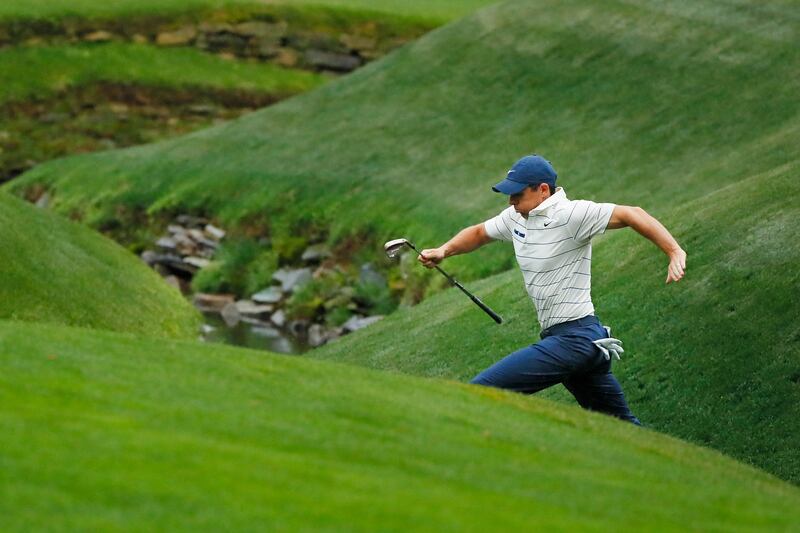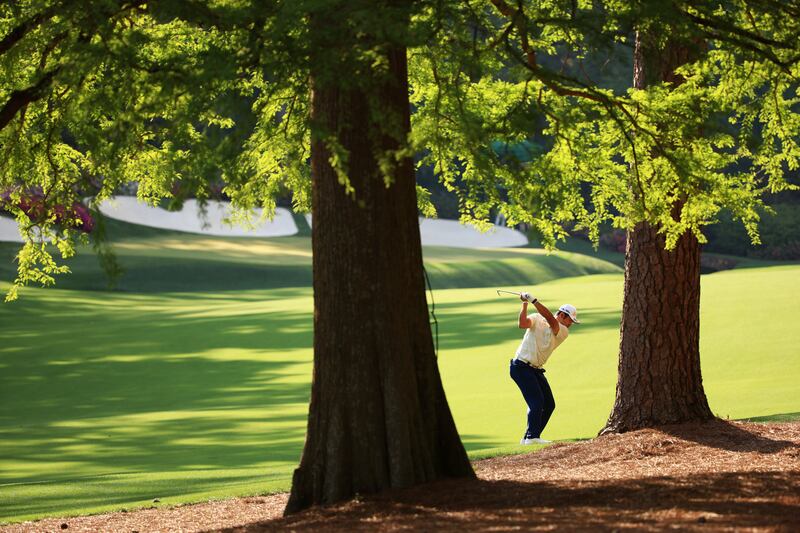The iconic par-five 13th hole at Augusta National will look and play differently this time at the Masters: the hole’s yardage has been increased by 35 yards, up to 545 yards from 510 yards last year, and will consequently pose a different challenge for players.
After years of conjecture on a possible lengthening of the hole, which features a hard dog-leg left with a tributary of Rae’s Creek running all the way up the left and guarding the front of the green, things happened quickly in the year since Scottie Scheffler acquired the green jacket.
Last year the hole played to an average of 4.83. It was back in 2019 – when the hole played the easiest with an average of 4.473, with 17 eagles recorded and 158 birdies that year – that Augusta National chairman Fred Ridley provided a hint that change, rumoured for years, was imminent. “It still provides a lot of drama, but its challenge is being diminished. We don’t think that’s good for the Masters. We don’t think it’s good for the game.”
The change to the 13th hole – where Bryson DeChambeau once hit a wedge for his second shot after flying the line of trees down the left – means that the original integrity of the hole conceived by Bobby Jones has been restored with the extra yardage, likely making the decision to go for the green in two more difficult and increasing the risk-reward nature.
Philip Reid: I’ve been to all of Rory McIlroy’s Major triumphs. This Masters win is unmatched in history
Television crews arrive from sunrise as Holywood golf club basks in Rory McIlroy’s Masters win
Rory McIlroy warns Augusta members will have to ‘wheel me out of here when I am 90’
Five things we learned as Rory McIlroy secured Masters green jacket

On a recent visit defending champion Scottie Scheffler found a significant difference to how the hole will likely play in tournament conditions. “It’s a lot longer, definitely harder. I used to hit 3-wood there because I can sling-hook a 3-wood. I can’t sling-hook a driver on purpose...the 3-wood, it has enough spin where the ball can actually stay in the air. With the driver, when I hook it, the ball doesn’t have enough spin to where it can stay in the air and hook that much. It kind of nosedives. But the 3-wood, I can sit it up there and it will just be a boomerang. Now I’ll just hit driver out towards the corner and try to use more of the contouring to get the ball that way.”
[ Confident McIlroy fully focused on Masters challengeOpens in new window ]
Bubba Watson, a two-time champion, also made it his business to play advance practice rounds and did not sound too enamoured with the changes he found. “There’s probably going to be a lot more lay-ups. I mean, a few years ago they wanted the roars back on Sunday. Now you’re taking away the roars? That’s kind of weird.”

There remains the possibility, of course, that the old, forward tee may be used in one of the rounds, but for the most part the new-look 13th will play to its extended yardage of 545 yards – with the new tee box built on a five-acre parcel of land acquired from Augusta Country Club – in making for a more difficult challenge.















